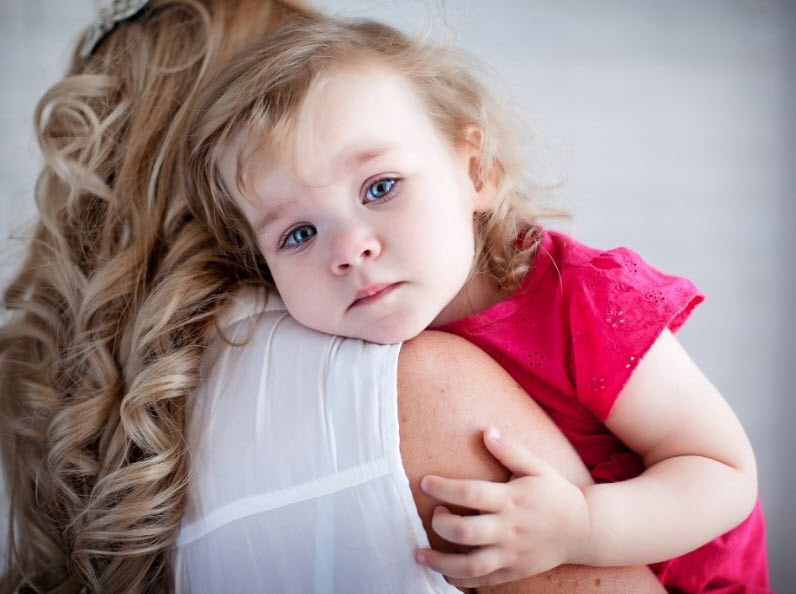
09 Aug Helping Your Child Conquer Separation Anxiety
All children have fears. As adults, we can empathize when we see a spider or take an elevator in a very tall building. Children may develop specific fears and phobias of everyday objects, such as insects, dogs, germs, thunderstorms, the doctor, etc. For other kids, their worry is around separating.
Separation anxiety is a normal stage of development for all children, but in some cases, their anxiety may escalate and become so powerful that it begins to disrupt daily life. If your child’s anxiety is intense and persistent, this may require seeking professional treatment, but as a parent there are many things you can do reduce worry, provide comfort, and make your child feel less fearful.
Signs and Symptoms:
- Your child is more clingy
- After ruling out any medical issue, your child continues to complain of headaches, upset stomach, dizziness, or nausea
- Your child is fearful and displays heightened anxiety, so much so that it disrupts routines, such as school refusal or creates issues with sleep
- Your child may fear something awful happening to you or other primary caretakers
- There is excessive worry that a loved one will become ill or die
- Your child fears that they will be kidnapped or lost
Understanding the Causes of Separation Anxiety:
Separation anxiety can have many root causes, but is most commonly triggered by:
- A change in the environment (a new sibling, a new school, moving to a new home, etc.)
- Life cycle events or transitions (divorce, the loss of a family member or pet, switching schools)
- Family history of anxiety
Techniques that Help:
Create consistency
It is imperative to create consistency for children with anxiety and fears. There should be predictability in daily routines, so the child can reduce any anticipatory anxiety regarding times in which they will need to separate. This way, your child knows what it expected and can rest easy.
Consistency should also be considered when creating a ‘goodbye ritual’ and bedtime routine. This can include reassurance that they are loved and safe while also continuing to set limits (working to play independently, sleep in their own bed, successfully attend a full day of school, etc).
Exposure Therapy
Exposure and Response Prevention is the most effective technique in targeting any fear, especially separation anxiety. Exposure Therapy is a type of Cognitive Behavioral Therapy aimed to reduce anxiety by creating structured and intentional exposures to the fear. The child is faced with their fear in a safe space in incremental steps. The goal is to ‘unlearn’ the behaviors that reinforce the worry (learning to separate in healthy ways).
Developing a Hierarchy of Fears
This sets the stage and prepares the child to tackle more and more anxiety progressively related to their fear. The situations are minor and tolerable at first, leading up to the most anxiety-producing situation. We engage in asking the child questions such as, “on a scale of 1 to 10, how difficult would it be for you to be in a separate room from Mom… sleep in your own bed… have a playdate on your own… etc.”
As the child rates these fears, we create the Hierarchy of Fears and the child learns there are more manageable situations she can tackle. As the child is exposed to the triggers (with support from trusted adults), she must remain in the situation until she can feel calm. She climbs her fear ladder and feels a sense of accomplishment. Through repeated exposures, the anxiety gradually subsides altogether and the thought of separating no longer induces anxiety.
Externalizing the Fear
Oftentimes, children need to feel a sense of control when challenging their anxiety. Personifying the fear or creating a character that represents their anxiety can be helpful in doing this. You can encourage your child to consider their fear as a ‘bully’ or that he or she has a ‘worry monster.’ You can also assist your child in creating a superhero with special skills and powers to defeat their worry and help them remain brave.
Accessing Logic and Reasoning Skills
Children are likely to overestimate the likelihood of their fears, given the ways emotions can take over their bodies and cloud their thoughts. Help your child to defeat their worries by accessing reasoning and logic. You can encourage them to do so by asking ‘what are the chances of that happening to me?’ or ‘how likely is will my worry come true?’ With some coaching, children are able to access their reasoning skills and dispute the anxious thinking.
Create a Safe Space
Talk with your child openly about their worry. If they are not ready to engage in any behavioral interventions, therapy, or begin to climb their fear ladder, you can take steps by modeling healthy emotional expression and creating a safe space for your child to talk about their anxiety and fear.

North Shore Family Services is a team of skilled and approachable therapists that help parents, children, teens, adults, and couples reduce anxiety and stress, learn effective problem-solving techniques, and manage emotions and behaviors that inhibit personal, school, family, and relationship success. We make therapy a productive, engaging and relaxing place for everyone to work hard and make the improvements they desire. To find the right-fit therapist for you and your family, visit our clinician’s page.



Sorry, the comment form is closed at this time.